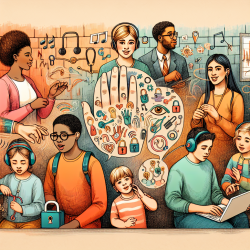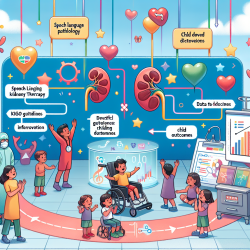Introduction
In the realm of speech-language pathology, understanding the intricate workings of the brain's network is pivotal. Recent research, titled "Fibration symmetry-breaking supports functional transitions in a brain network engaged in language," sheds light on how the brain's structural connectivity influences its functional dynamics, particularly in language processing. This blog aims to translate these findings into actionable insights for practitioners, focusing on improving therapeutic outcomes for children.
Understanding Fibration Symmetry-Breaking
The study introduces the concept of fibration symmetry-breaking, derived from category theory, to explain the brain's network dynamics. Unlike traditional symmetry, which is global, fibration symmetry is local, preserving the input-output relationships of brain regions. This local symmetry is crucial for cluster synchronization, where groups of brain regions work in harmony during language tasks.
Implications for Speech-Language Pathology
For practitioners, understanding these dynamics can enhance therapeutic strategies. Here are key takeaways:
- Targeted Interventions: By identifying the specific brain regions involved in language tasks, therapists can design interventions that target these areas, enhancing synchronization and improving language outcomes.
- Personalized Therapy: The study's insights into how different tasks activate various brain networks suggest that therapy can be tailored to individual needs, focusing on specific tasks that engage the relevant brain regions.
- Monitoring Progress: Understanding the brain's structural and functional connectivity allows for better monitoring of a child's progress, as changes in connectivity can be linked to improvements in language skills.
Encouraging Further Research
While this study provides a foundational understanding, it also opens avenues for further research. Practitioners are encouraged to explore:
- Longitudinal Studies: Investigating how symmetry-breaking evolves with language development and therapy can provide deeper insights into effective interventions.
- Comparative Analysis: Comparing the brain networks of children with typical development and those with language impairments can highlight critical differences and potential therapeutic targets.
Conclusion
By integrating the concept of fibration symmetry-breaking into practice, speech-language pathologists can enhance their therapeutic approaches, leading to better outcomes for children. The intersection of neuroscience and therapy offers a promising frontier for improving language development.
To read the original research paper, please follow this link: Fibration symmetry-breaking supports functional transitions in a brain network engaged in language.










